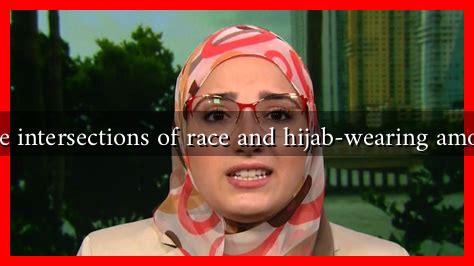-
Table of Contents
- What are the Intersections of Race and Hijab-Wearing Among Women?
- The Cultural Significance of the Hijab
- Race and the Perception of Hijab-Wearing Women
- Case Studies: Diverse Experiences of Hijab-Wearing Women
- Empowerment Through Solidarity
- Conclusion: Embracing Diversity in Hijab-Wearing Experiences
What are the Intersections of Race and Hijab-Wearing Among Women?
The hijab, a traditional headscarf worn by many Muslim women, has become a symbol of both faith and identity. However, the act of wearing a hijab is not merely a personal choice; it is deeply intertwined with issues of race, culture, and societal perception. This article explores the complex intersections of race and hijab-wearing among women, shedding light on the diverse experiences and challenges faced by hijab-wearing women across different racial backgrounds.
The Cultural Significance of the Hijab
The hijab is often seen as a representation of modesty and religious commitment in Islam. However, its significance varies widely among different cultures and communities. For many women, wearing the hijab is a personal choice that reflects their beliefs and values. Yet, for others, it can be a source of discrimination and misunderstanding.
- Religious Identity: For many Muslim women, the hijab is a vital part of their religious identity, symbolizing their commitment to their faith.
- Cultural Heritage: In some cultures, the hijab is a traditional garment that connects women to their heritage and community.
- Personal Empowerment: Some women view wearing the hijab as an act of empowerment, reclaiming their bodies and identities in a society that often objectifies women.
Race and the Perception of Hijab-Wearing Women
The intersection of race and hijab-wearing is particularly significant in Western societies, where racial and religious identities often collide. Women of color who wear the hijab frequently face unique challenges that are compounded by their racial identity.
- Islamophobia: Following events such as 9/11, Muslim women, particularly those who wear the hijab, have been targets of increased discrimination and violence. A report by the Council on American-Islamic Relations (CAIR) noted a significant rise in anti-Muslim incidents, with hijab-wearing women often being the most visible targets.
- Racial Stereotypes: Hijab-wearing women of color often confront stereotypes that conflate their religious identity with their racial background, leading to a dual burden of discrimination.
- Media Representation: The portrayal of hijab-wearing women in media often lacks nuance, reinforcing stereotypes that can perpetuate racism and xenophobia.
Case Studies: Diverse Experiences of Hijab-Wearing Women
To better understand the intersections of race and hijab-wearing, it is essential to examine the experiences of women from various racial backgrounds.
- Black Muslim Women: Black Muslim women often face a unique set of challenges, including racism within the Muslim community and sexism within broader society. A study published in the journal “Gender & Society” found that Black Muslim women frequently navigate both racial and religious discrimination, leading to a complex identity experience.
- Arab Women: Arab women who wear the hijab may experience different forms of discrimination, often tied to geopolitical issues. For instance, the portrayal of Arab women in Western media can lead to misconceptions that affect their daily lives.
- South Asian Women: South Asian women who wear the hijab may face cultural expectations from their communities while also dealing with the broader societal perceptions of being Muslim in a post-9/11 world.
Empowerment Through Solidarity
Despite the challenges, many hijab-wearing women find empowerment through solidarity and community support. Organizations such as the Muslim Women’s Network UK and the Hijab Project work to uplift the voices of hijab-wearing women, providing platforms for dialogue and advocacy.
Moreover, social media has become a powerful tool for hijab-wearing women to share their stories, challenge stereotypes, and foster a sense of community. Hashtags like #HijabDay and #MuslimWomenSpeak have gained traction, allowing women to express their identities and experiences authentically.
Conclusion: Embracing Diversity in Hijab-Wearing Experiences
The intersections of race and hijab-wearing among women reveal a rich tapestry of experiences shaped by cultural, religious, and societal factors. While hijab-wearing women face unique challenges related to race and identity, they also find strength in community and solidarity. Understanding these intersections is crucial for fostering a more inclusive society that respects and celebrates diversity.
As we continue to engage in conversations about race, religion, and identity, it is essential to listen to the voices of hijab-wearing women and recognize the complexities of their experiences. By doing so, we can work towards a more equitable world where all women, regardless of their race or religious beliefs, can express their identities freely and without fear of discrimination.
For further reading on the experiences of hijab-wearing women, consider exploring resources from organizations like CAIR and Muslim Women’s Network UK.


